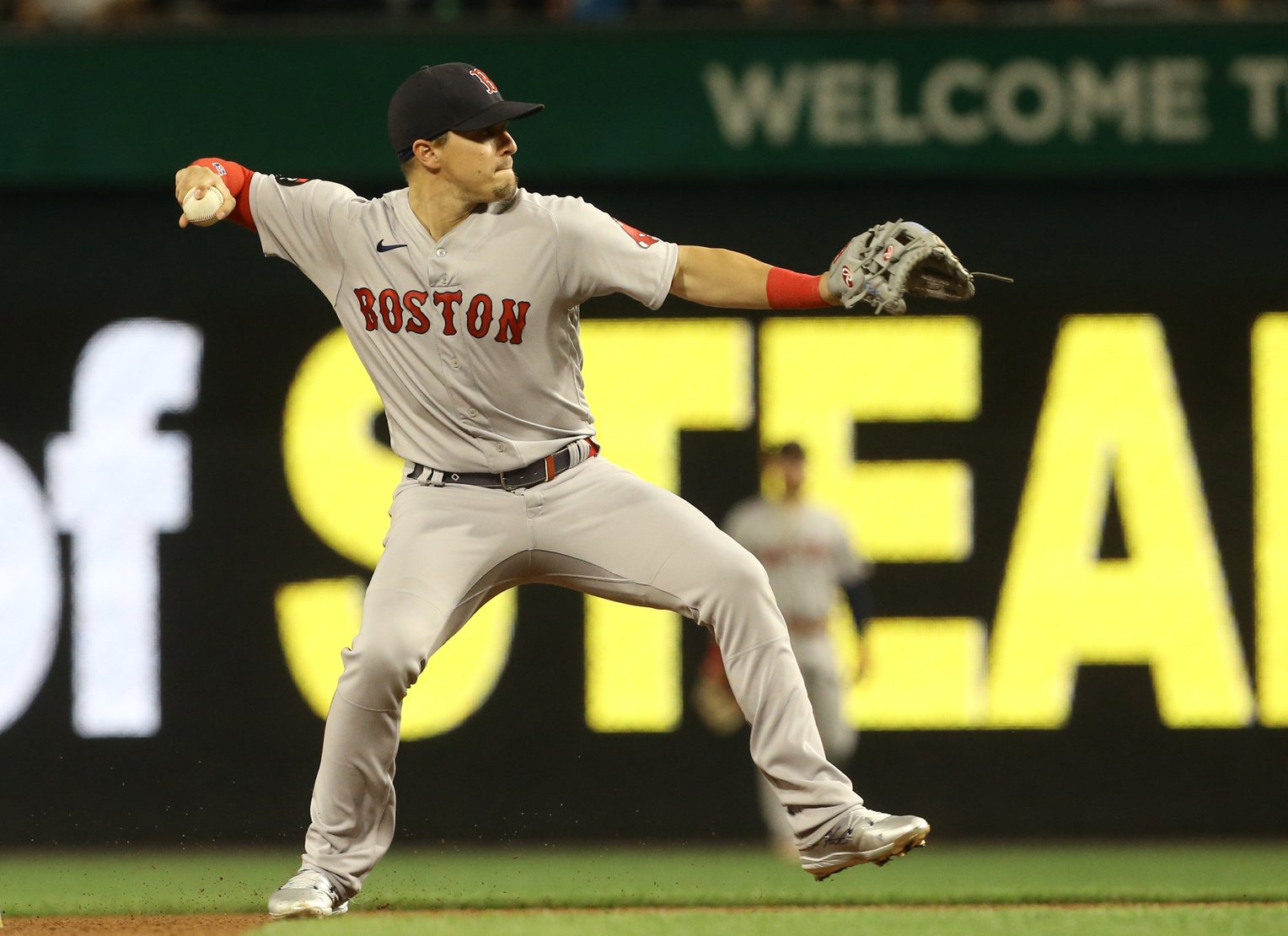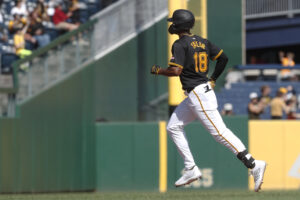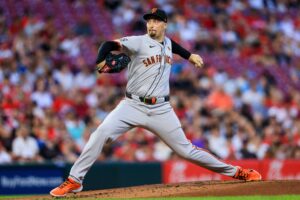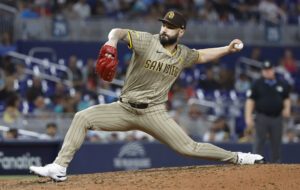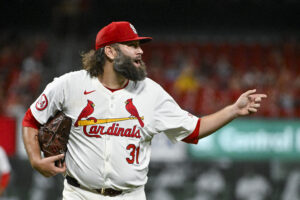A dominant theme surrounding the Boston Red Sox right now is who will be their leadoff hitter. Last year, Alex Cora played roulette at that position after Kike Hernandez went down with an injury. A lack of consistency at this position in the lineup was a key factor in some of their failures, and as a result, the Sox used seven different players to leadoff once Hernández went down.
The outcome was far from ideal as those seven players combined to bat .235 with an on-base percentage of .295, good for 27th in the league in those categories.
The instability at the leadoff position forced Cora to rely on players who were generally inexperienced in that role. It wasn’t until Tommy Pham finished the season leading off that the Sox found marginal improvement (still a meager .305 OBP).
With Pham gone, Hernández back, Masataka Yoshida signed, and Triston Casas now firmly in the lineup, the Sox will have another stable of leadoff options. The difference, however, is this group looks more prepared to assume the most important place in the lineup.
Already, the Sox have tried Casas and Yoshida in spring training games, and Cora has identified other possibilities while keeping the lineup in ambiguity. The venerable manager named a few different possibilities for leadoff spot, but who is best suited, at the moment? Let’s take a look.
Boston’s Leadoff Hitter Options
Yoshida
Cora indicated in past interviews that he will look to utilize a left-right-left alternation so Rafael Devers and Yoshida (two lefty bats) can split up. This most likely means if Yoshida leads off, Devers will definitely bat third.
A lot of the time, though, who leads off will depend on what the matchup looks like on any given night.
Yoshida, in particular, is a viable fit in the leadoff spot since he boasted double the walks to strikeouts and finished first in OBP throughout 2021 and 2022 while playing in the Nippon Professional Baseball league.
He also showed a tenacity for extra base hits, finishing with 28 doubles in 2022, which was the second most in a single season across the seven years he’s played.
His low strikeout rate is perfect for the leadoff spot, but I doubt Cora initially uses him in that position since Yoshida will undoubtedly need some time to find his footing in an MLB setting. Still, I would not be surprised if he leads off some games, especially if someone sits for a game or two.
Please enjoy Masataka Yoshida's first hit in a Red Sox uniform. pic.twitter.com/VkRtIZOb6X
— Red Sox (@RedSox) February 26, 2023
Casas
When people think of leadoff hitters, they typically reference diminutive players who specialize in speed. While this is still the case on some teams, others, like the Yankees, experimented with using bulkier power hitters in their leadoff spot. At the end of the day, it’s all about jumpstarting the offense by getting runs or getting on base.
At 6’4″ and 250 pounds, Casas fits that mold if the Sox decide to place him in the leadoff position.
According to Baseball Savant, he’s only in the seventh percentile for speed, but he rarely strikes out and his OBP was .358 in the 95 plate appearances he mustered. If he was a qualified hitter in 2022, he would have been in the top 25 in the league for OBP, and while a very small sample size, his K rate was almost identical to his walk rate (24 % K rate to 20 percent walk rate).
My guess is Cora will place Casas somewhere in the middle of the lineup to start the season, but if he proves that his high OBP and walk rate weren’t a fluke, he will definitely land an opportunity.
Hernández
Hernández has by far the most experience leading off, and rightfully so. In 2021 alone, he spent 576 plate appearances as Boston’s first hitter and carried a respectable OBP of .342. He also featured a low K rate (18 percent) and a highly respectable walk rate (10 percent).
In many aspects, Hernández is as flexible as they come. His success as a hitter is sometimes even more apparent at the bottom of the order. In 2021 alone, he batted .333 in 28 plate appearances to go along with a .435 OBP while batting eighth in the order.
His flexibility was evident again in 2022, even in a year cut short by injuries. He had his second most plate appearances batting seventh in the order, and his average was by far the highest in that position (.333). Even years prior indicate that Hernández fit perfectly in a late-order role. Since 2018, he has hit .295 when batting seventh, eighth, or ninth in the order.
That type of success allows Cora to insert Hernández where he needs too. With many different options for leadoff, batting him eighth or ninth can jumpstart the top of the order and generate a rally in the heat of games.
Even despite this end-of-order success, Hernández’s ability to garner extra base hits could bode well in a leadoff role. Among hitters with at least 550 plate appearances in 2021, Hernández finished 19th in doubles (35) out of 95 hitters. That’s key for galvanizing the offense, especially at the beginning of games.
Hernández is the type of player who may start the season leading off, but as more guys gain experience, Cora may want to utilize him in other spots where the order is lacking.
Christian Arroyo
Stature-wise, Arroyo is the quintessential leadoff hitter. At 6’1″ and 210 pounds, his body type invokes a smaller strike zone, which means there’s a greater chance for him to get on base.
His 2022 statistics don’t support this notion (only a 4.3 percent walk rate), but he did bat .333 with an OBP of .375 when hitting first in the lineup. And much like Hernández, Arroyo displayed a penchant for hitting well in multiple spots throughout the order. In fact, he batted in every spot except second.
When considering Cora’s “left-right-left” philosophy, it would not surprise me if Arroyo and Hernández share leadoff duties when the Red Sox face lefties during the season.
Arroyo spent most of his career as a platoon guy, but with Trevor Story out for an extended period of time, he’ll serve a larger role in the Sox order, much like he did in 2022 where he carried a more voluminous load (300 plate appearances, the most of his career). It’s just a matter of whether he’ll emulate some of the success from last year at the leadoff spot.
The verdict
Honestly, the laborious trudge of the season will require Cora to experiment with different possibilities. Much like last year, there are a myriad of options for the leadoff position, but unlike last year, there’s more stability. It’s less about patching the problems with short-term Band-Aids and more about initiating situational awareness. They finally have viable choices at their disposable.
It’s worth noting that none of these guys are particularly speedy, but Cora already said speed doesn’t really matter as much for them. It’s about getting on base, and so far, all four of these options have shown they can do that in various scenarios and capacities.
That being said, it’s wise for Cora to begin the season with Arroyo or Hernández batting first to alleviate some of the pressure from the youngsters. As Casas and Yoshida solidify themselves, Cora will look to insert them in leadoff spots. If all goes, well, Yoshida or Casas will lead off in the playoffs (if they make it), which then will allow Arroyo and Hernández to fortify the backend of the lineup. In turn, this will create a more balanced attack when the final months arrive.
Main photo credits:
Charles LeClaire-USA Today Sports
Players mentioned:
Kike Hernandez, Tommy Pham, Masataka Yoshida, Triston Casas, Rafael Devers, Christian Arroyo, Trevor Story


